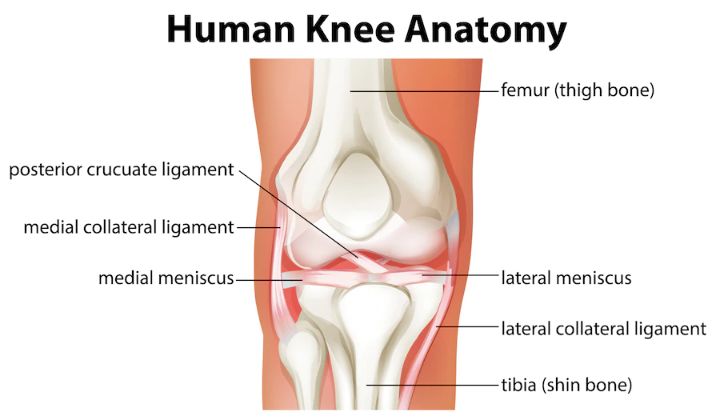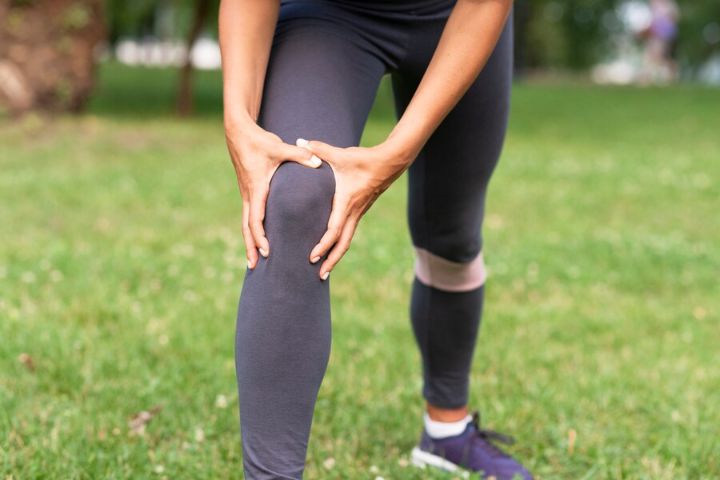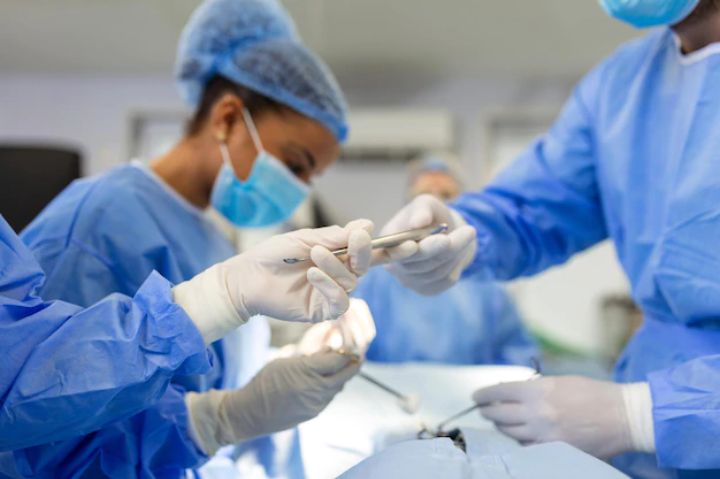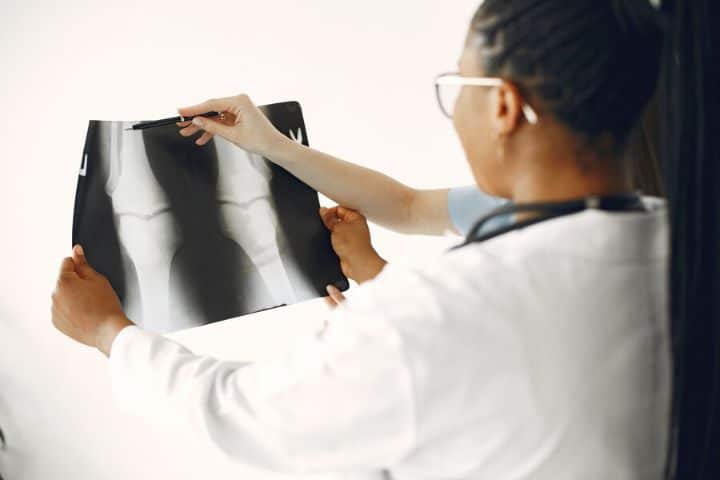The knee joint is one of the most complex joints in the human body, and the posterolateral corner plays a crucial role in its stability. This knee area comprises several ligaments and structures that work together to ensure proper function.
Unfortunately, injuries to the posterolateral corner are not uncommon and can significantly impact a person’s mobility and quality of life.

Photo Credit: brgfx
The posterolateral corner (PLC) of the knee is a complex area that involves multiple ligaments and structures that play a crucial role in maintaining knee stability. Understanding the anatomy of the PLC is essential in diagnosing and treating injuries in this region of the knee.
The PLC is made up of several structures, including the lateral collateral ligament (LCL), popliteofibular ligament (PFL), popliteus tendon, and the lateral meniscus.
The LCL is the primary ligament responsible for resisting varus stress (force that pushes the knee outward), while the PFL helps in resisting rotational forces that occur during knee flexion. The popliteus tendon and lateral meniscus also contribute to the stability of the knee in this region.
The main function of the PLC is to provide stability to the knee during activities that involve rotational and varus forces. In addition, it helps prevent against posterior and lateral tibial translation (backward and sideways movement of the shin bone), especially when the knee is flexed.
The PLC plays a critical role in maintaining knee stability and preventing injuries. Understanding the anatomy of the PLC is essential in diagnosing and treating injuries in this region of the knee.
The PLC of the knee is a complex area consisting of multiple ligaments and structures that work together to maintain knee stability. Damage to any of these structures can result in a posterolateral corner injury, which can significantly impact knee function and mobility.
Posterolateral instability is a common injury that occurs when the posterolateral corner ligaments are stretched or torn. This injury usually occurs due to a twisting motion of the knee or a direct blow to the knee. Symptoms may include pain, swelling, and instability, making it difficult to bear weight.

Photo Credit: Freepik
The diagnosis of posterolateral instability is usually made through a physical examination, followed by imaging studies such as X-rays and MRI. Depending on the severity of the injury, treatment options for posterolateral instability may include physical therapy, rehabilitation, and surgery.
Posterolateral rotatory instability is another common posterolateral corner injury that occurs when the knee is dislocated or subluxated. This injury can cause the knee joint to become unstable and may result in recurrent dislocations. Symptoms may include pain, swelling, and difficulty walking or bearing weight on the affected leg.
The diagnosis of posterolateral rotatory instability is generally made through a physical examination, followed by imaging studies such as X-rays and MRI. Depending on the severity of the injury, treatment options for posterolateral rotatory instability may include physical therapy, rehabilitation, and surgery.
Posterolateral corner avulsion injuries occur when the ligaments or tendons of the PCL are torn away from their attachment points on the bone. These injuries are usually caused by a direct impact to the outside of the knee and may result in significant instability and pain.
Diagnosing PCL avulsion injuries is usually made through a physical examination, followed by imaging studies such as X-rays and MRI. Treatment options for PCL avulsion injuries may include physical therapy, rehabilitation, and surgery, depending on the severity of the injury.
The treatment of posterolateral corner injuries depends on the severity of the injury, the patient’s age, and activity level. Non-surgical options are typically the first-line approach, but some injuries may require surgical intervention.
Non-surgical treatment options for PCL injuries include physical therapy, rehabilitation exercises, and bracing.

Photo Credit: stefamerpik
Surgery may be required if non-surgical treatment options do not improve symptoms or if the injury is severe. Surgical options for PCL injuries include posterolateral corner reconstruction and surgery.
Recovery time after surgery varies, but typically involves physical therapy and rehabilitation exercises to help restore function, strength, and range of motion in the knee.
Following a posterolateral corner injury, rehabilitation is crucial to promote healing, restore knee function and reduce the risk of future injuries. The rehabilitation protocol for PCL injuries typically involves a combination of physical therapy exercises and techniques designed to improve strength, range of motion, and overall knee function.
Physical therapy exercises are a critical component of posterolateral corner injury rehabilitation. These exercises aim to strengthen the muscles supporting the knee joint and improve flexibility. A physical therapist will design an exercise plan tailored to the individual needs of the patient based on their initial assessment, including:
In addition to physical therapy exercises, various rehabilitation techniques can promote healing and improve knee function following a PCL injury. Some commonly used techniques include:
It is important to note that a qualified healthcare professional should guide rehabilitation for posterolateral corner injuries. Patients should follow their rehabilitation plan closely and communicate regularly with their healthcare provider to ensure a safe and successful recovery.

Photo Credit: prostooleh
Diagnosis of posterolateral corner injuries requires a thorough examination of the knee joint. Imaging techniques like MRI, ultrasound, and X-rays can aid in diagnosis and help determine the extent of the injury. It is important to differentiate PCL injuries from other knee injuries, as proper diagnosis is the first step toward effective treatment.
Certain patient populations may require special considerations when treating posterolateral corner injuries. For instance, older adults with degenerative knee conditions may require a more conservative approach to treatment. Children and adolescents with PCL injuries may require a more careful approach to rehabilitation to ensure proper bone and joint development.
Preventive measures can help reduce the risk of posterolateral corner injuries. This may include proper conditioning, strengthening, and stretching exercises to prevent muscular imbalances. Additionally, safety measures such as proper equipment use and technique for athletic activities can help reduce the risk of injury.
Long-term management of PCL injuries may require ongoing monitoring and follow-up care. This may include periodic imaging and joint function assessments to ensure continued healing and proper joint function. Depending on the initial injury and the treatment approach, ongoing rehabilitation exercises may be necessary to maintain strength and flexibility in the knee joint.
The posterolateral corner of the knee is a complex structure comprising ligaments and tissues that provide stability to the knee joint. It is located on the outer side of the knee and plays a crucial role in maintaining overall knee stability.
The posterolateral corner can be susceptible to various injuries, including posterolateral instability, rotatory instability, and avulsion injuries. These injuries can result from sports-related accidents, trauma, or excessive stress on the knee joint.
Posterolateral corner injuries are typically diagnosed through physical examination, medical history review, and imaging techniques such as MRI or X-ray. These diagnostic methods help determine the extent of the injury and guide the appropriate treatment approach.
Treatment options for posterolateral corner injuries can vary depending on the severity of the injury. Non-surgical approaches may include physical therapy, rehabilitation exercises, and braces or orthotics. Surgical interventions like posterolateral corner reconstruction or surgery may be necessary in more severe cases.
The recovery time for a posterolateral corner injury can vary depending on the individual, the extent of the injury, and the chosen treatment approach. Generally, it may take several weeks to months for complete recovery, with rehabilitation playing a crucial role in restoring knee function and stability.
While preventing all posterolateral corner injuries may not be possible, certain preventive measures can reduce the risk. These include maintaining proper knee alignment during physical activities, using appropriate protective gear, and gradually increasing intensity in sports or exercise routines. Consulting with a healthcare professional for injury prevention strategies is also recommended.